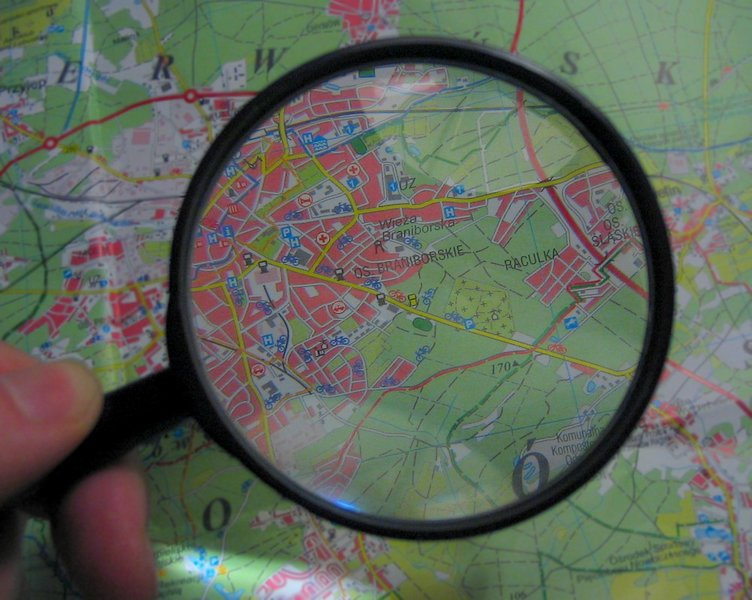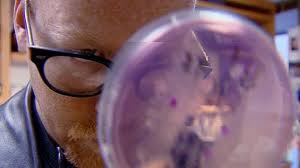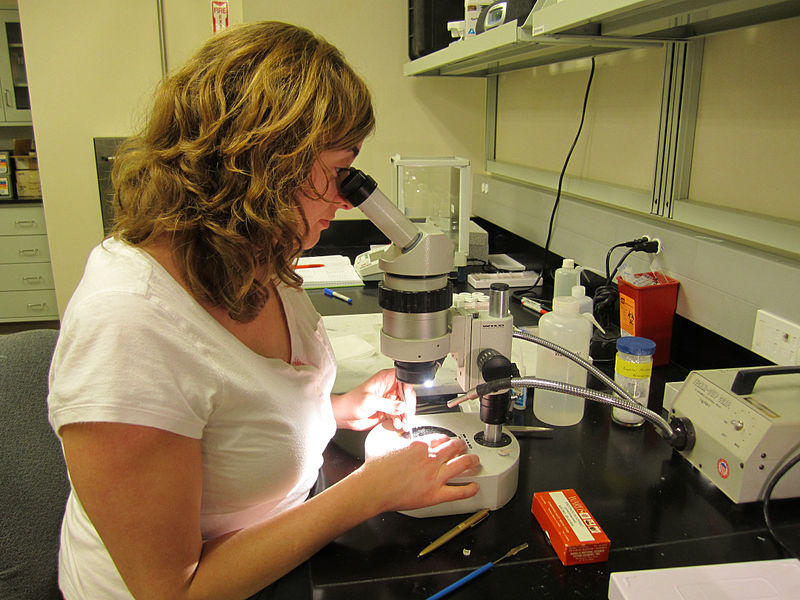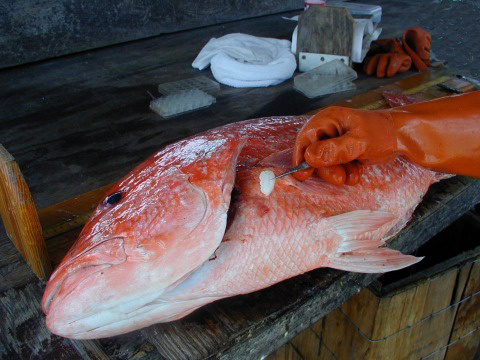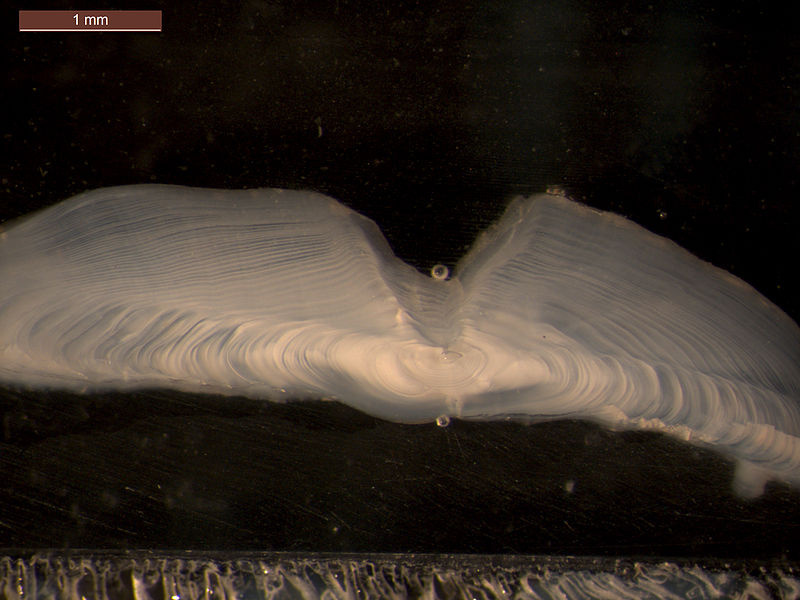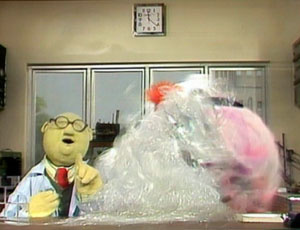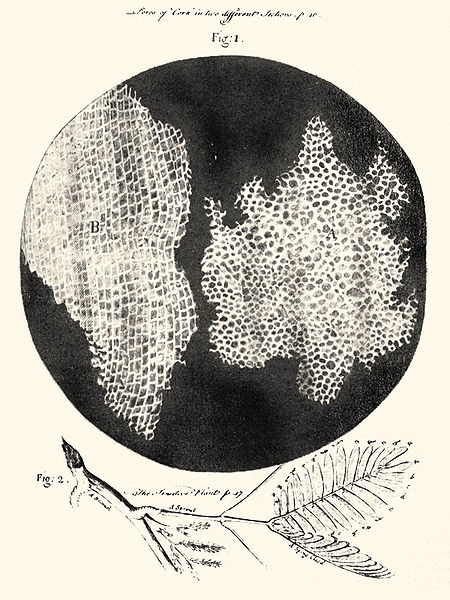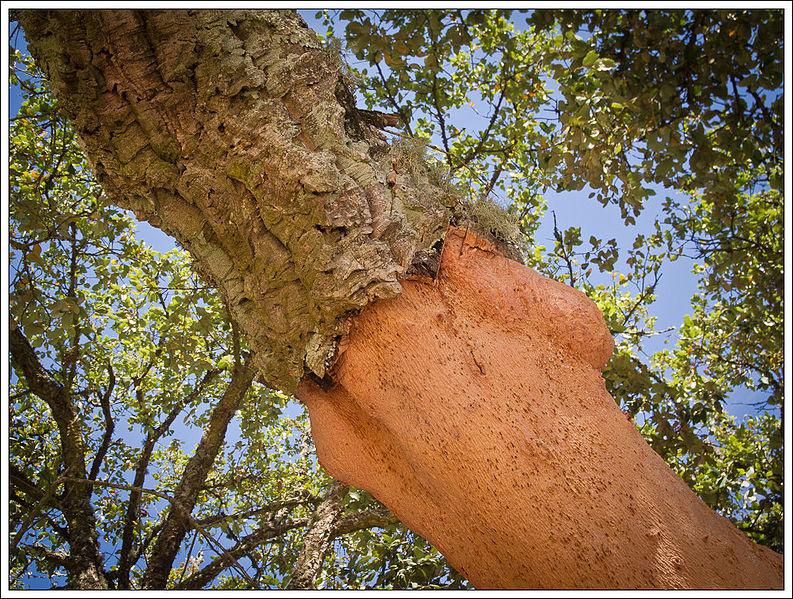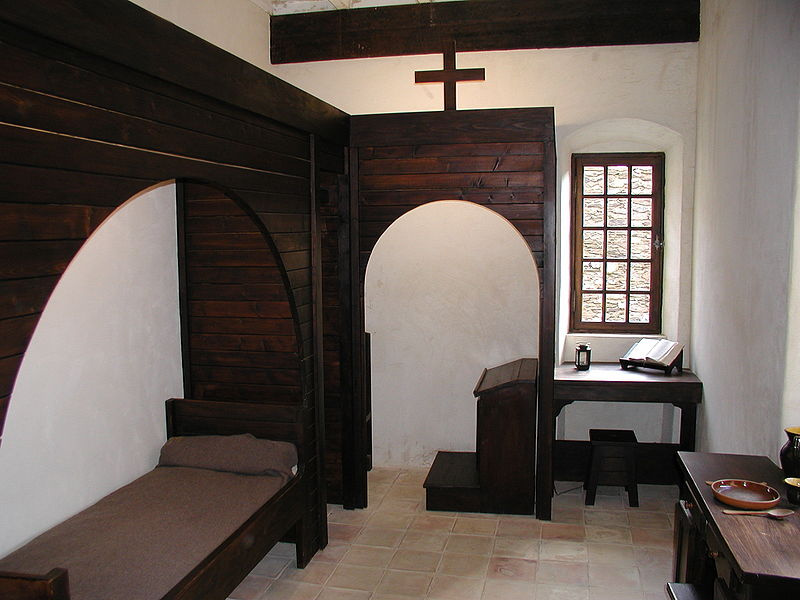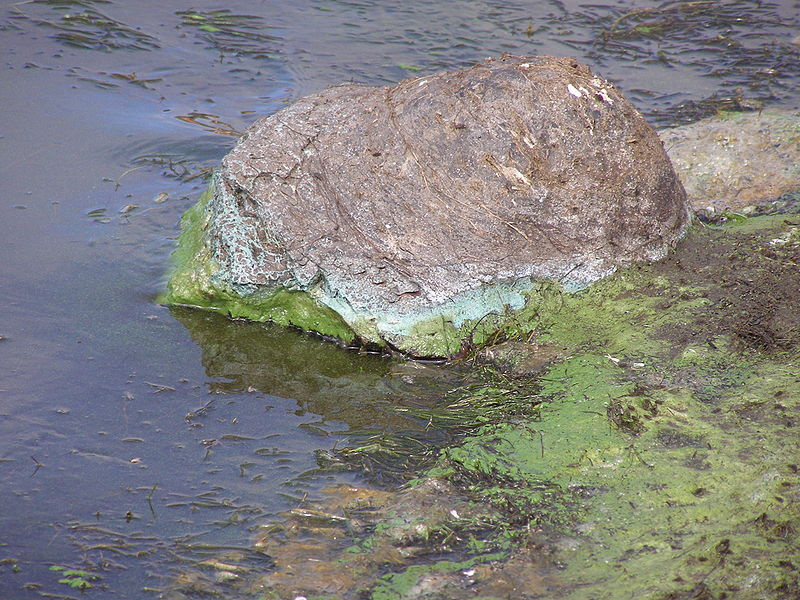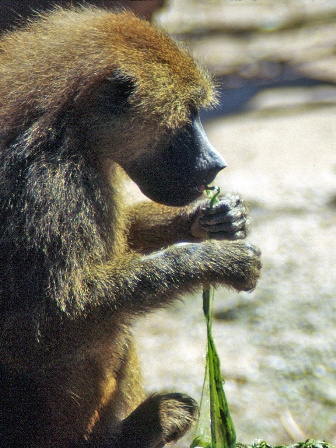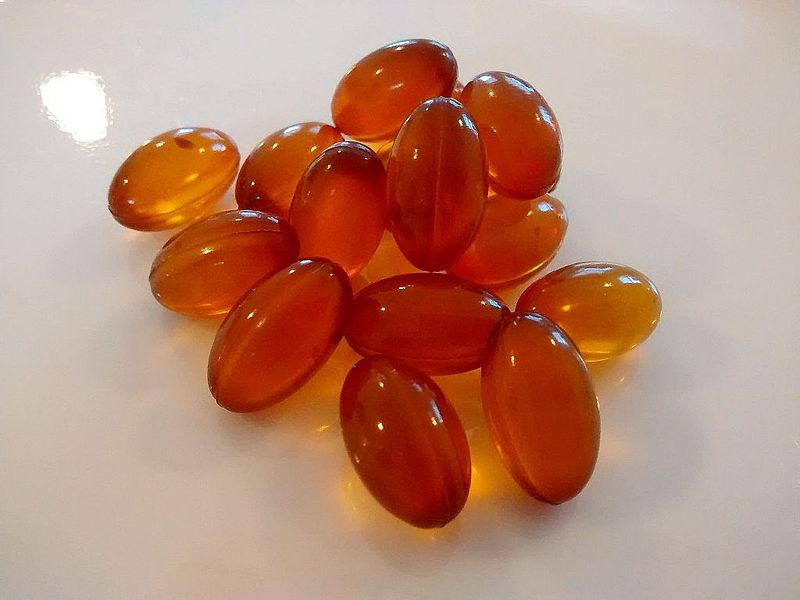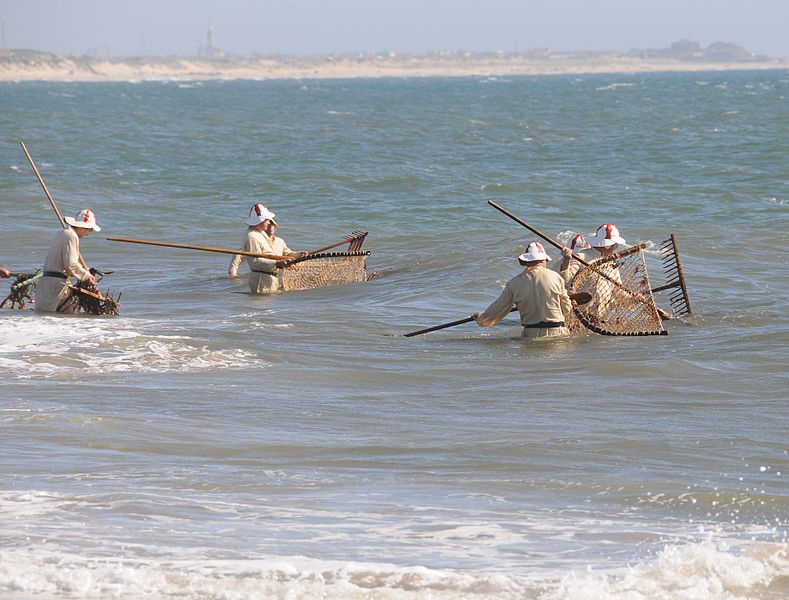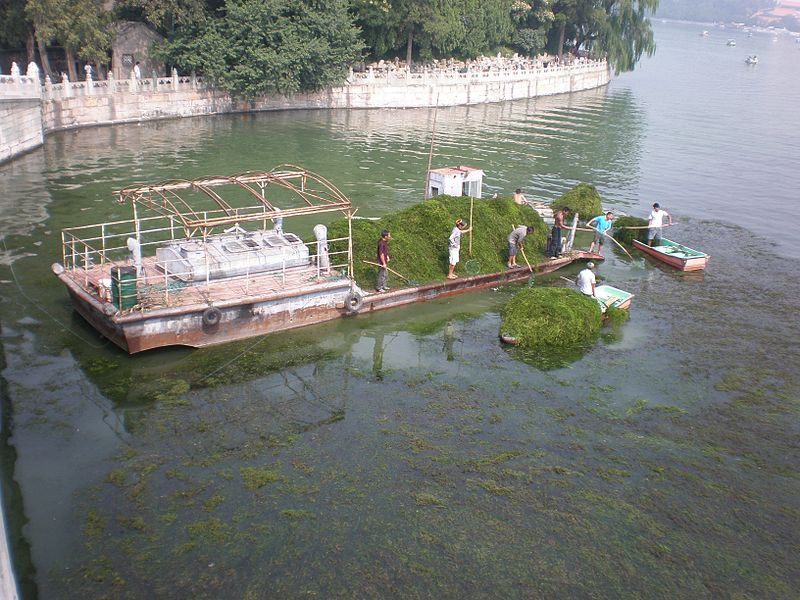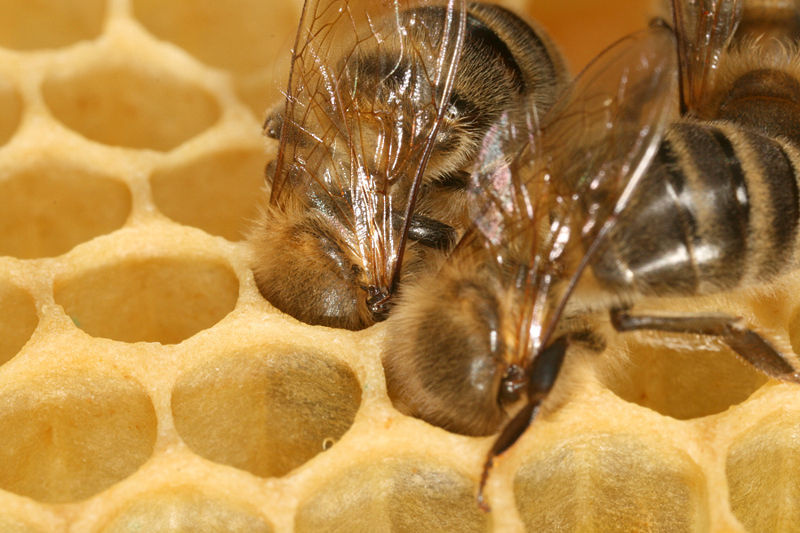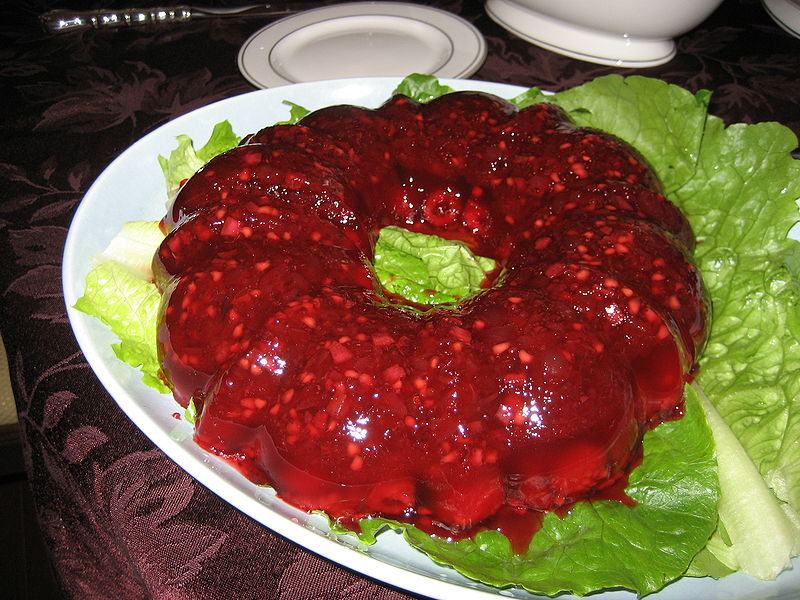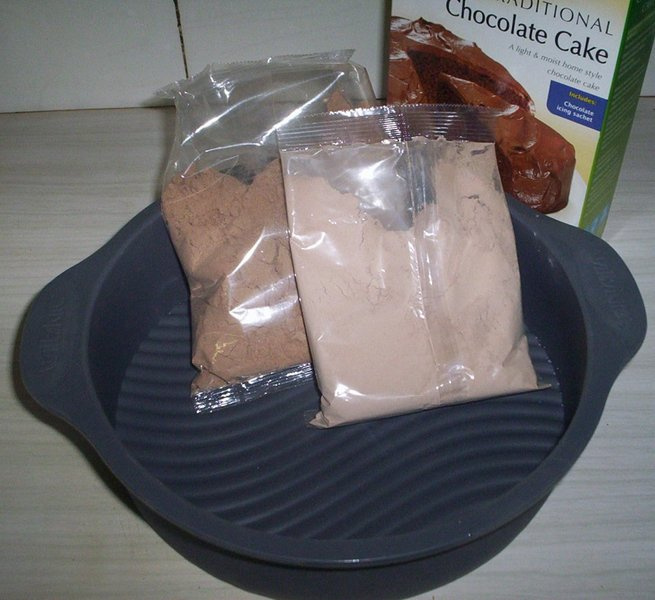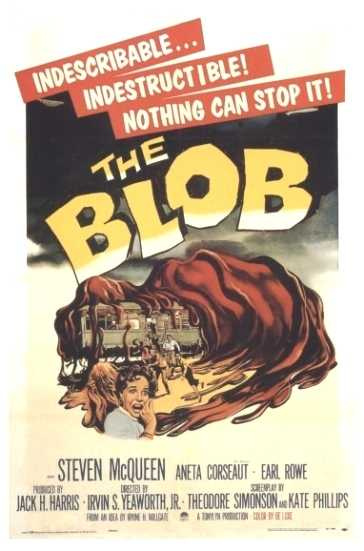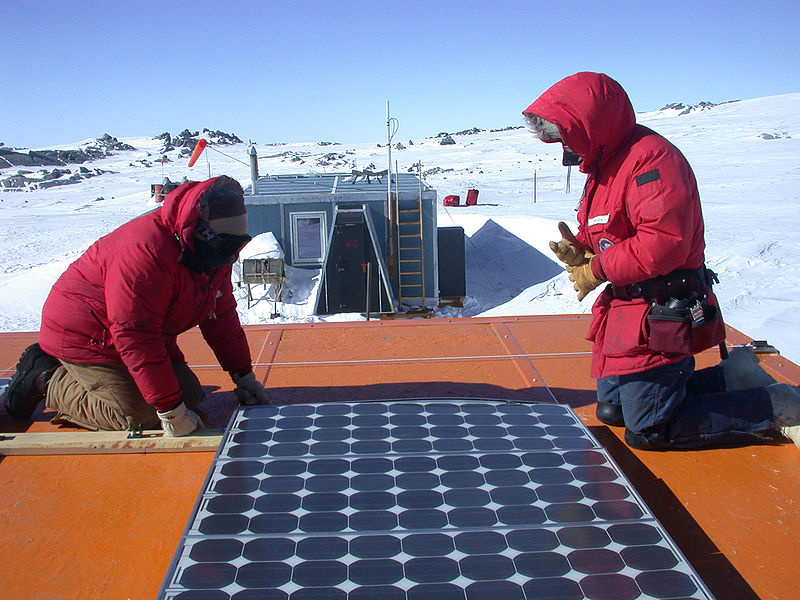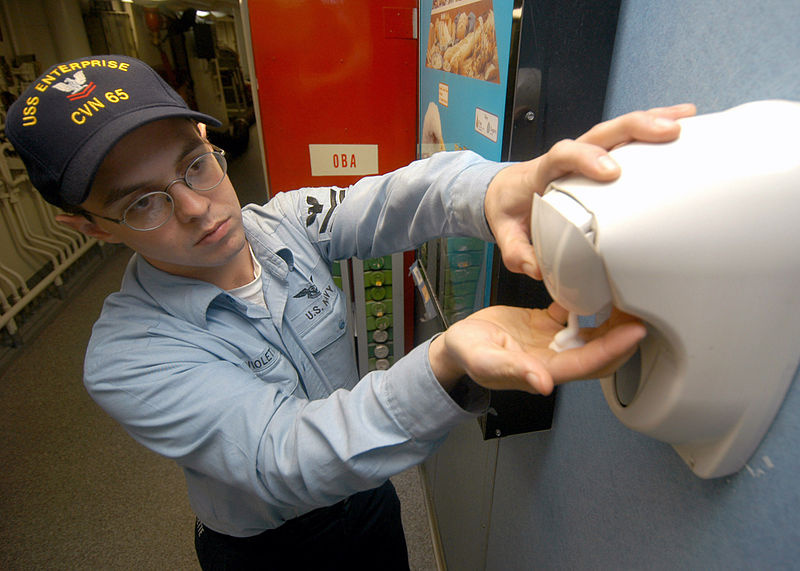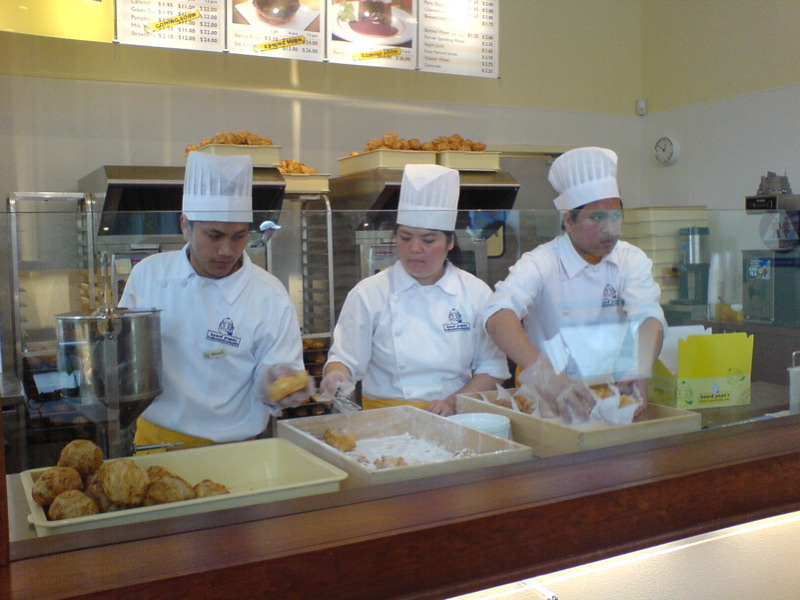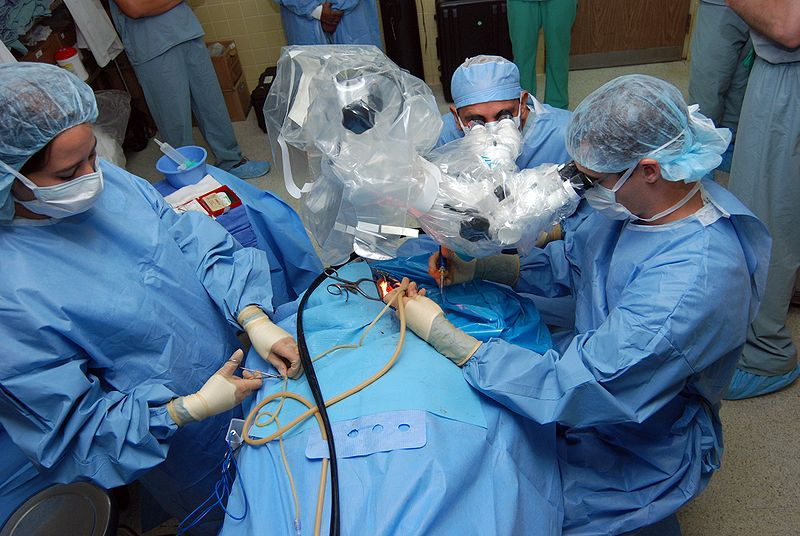Types of Cells
The job of a magnifying glass is to make small things easier to see. The shape of the glass part of it is what distorts the light rays, making the image appear bigger. By adjusting the shape of lenses, and making two work together, it became possible to magnify small things even more. This meant that objects that were much too small to see with just one's eye (like cells) could now be viewed.
| |

| |
You will analyze a diagram that has lots of different things that are of different sizes. The diagram will help you to figure out which type of microscope would be best to use to observe certain things.
| |
| |
| |
| |
Next, you use a very delicate saw and slice the otolith in half. The cut side gets glued to a glass microscope slide, and then the otolith is cut again to make it really thin. This allows the growth rings inside to be seen when the slide is viewed through a microscope. Similar to growth rings on a tree, rings can be counted to determine the age of the fish. What makes the process slightly more complicated than forestry is that each growth ring in the otolith do not necessarily represent a year in the fish's life.
See that little bar in the upper left of the photo? That shows the scale of the picture. That line (labeled 1mm) is about the width of a pencil mark, or the thickness of a dime.
| |
| |
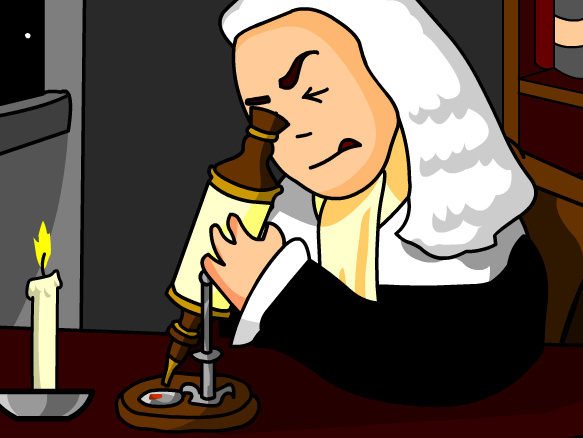
Brainpop: Microscopes
So many little parts with weird names! Tim explains how light moves through a microscope, and Moby irritates an amoeba.
| |
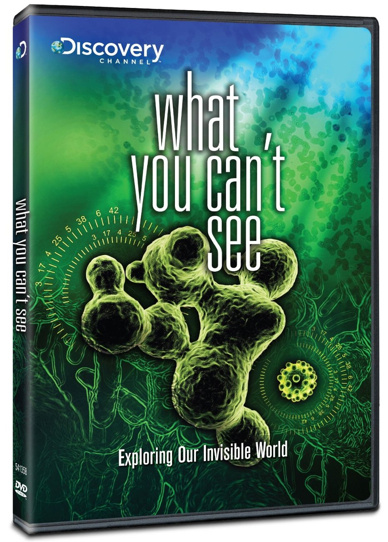
So many interesting tiny things are around you every day. They are even in your house, no matter how much you vacuum. That dust has a LOT of different things in it, and some of them are alive....
On the handout below, you will be drawing and describing some of the different things that you learn make up dust.
| |
These are some questions about reading from your textbook that covers different types of microscopes.
| |
| |
| |
This is one of the first drawings of something seen through a microscope. It was done by a scientist named Robert Hooke, in 1665. This was centuries before cameras were invented, so all of this detail was drawn very carefully by hand. Hooke was looking at a very thin slice of tree bark through the microscope, and saw what he described as "little rooms". Looks pretty similar to the apartment buildings above, doesn't it?
| |
The particular kind of tree bark that Hooke examined and drew is called cork, which comes from a kind of oak tree. On the lower part of the trunk, you can see where some of the cork has already been peeled off. Cork is used for a variety of things, including as a plug in the top of wine bottles, on bulletin boards, as flooring, as cushioning in shoes, and as gaskets in car engines.
| |
The "little rooms" that Hooke observed reminded him of the private rooms of monks in a monastery. These rooms are just large enough to have space for a bed, a small table for eating, a desk and stool by a window for studying religious texts, and an area for kneeling in prayer.
These rooms are called "cells" and the name has stuck for those tiny biologic parts ever since.
| |
We're almost to the microscopes, which you'll be using to help you see various tiny things to draw. First of all, though, you need to know how to correctly label the parts of your drawings.
| |
Now it's microscope time. You'll begin by looking at cork.
| |
These are some questions about reading from your textbook that covers some facts that scientists have discovered about cells.
| |
| |
| |
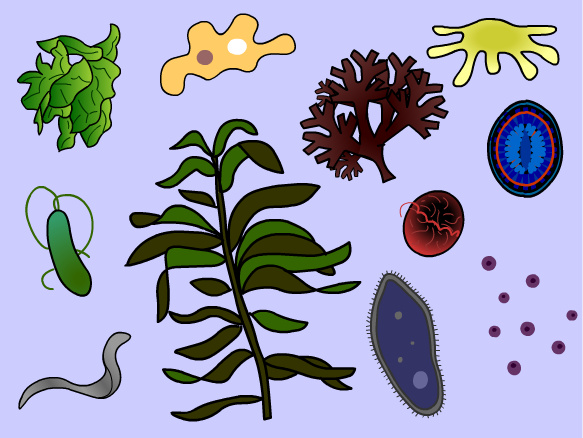
Brainpop: Protists
Tim describes different examples of protists floating across the screen. Moby thinks he is in a fashion show.
| |
Leeuwenhoek looked in pond scum and discovered protists. What will you find?
| |
| |
Algae exists in large multicellular form as seaweed, which is collected and used for a variety of things, ranging from fertilizer to a wrap for your favorite sushi roll. The people in the image are in Portugal, collecting seaweed to use as fertilizer, using traditional tools to collect it from the ocean.
| |
Algae can also be detrimental to the environment. In some lakes, it can actually clog up harbors. This usually happens when fertilizer makes it into the water as runoff from fields, or when sewage from boats is dumped directly into the water. Other problems then result, with floating algae blocking off sunlight and making it hard for aquatic life to get enough oxygen from the water.
| |

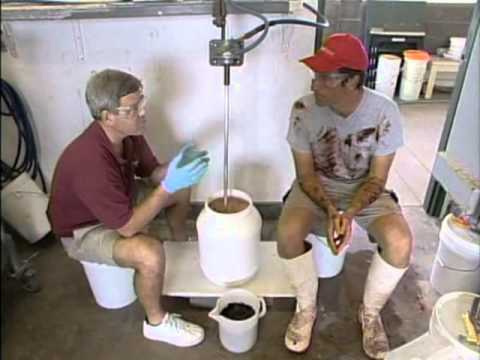
Episode 15: Micro-Algae Man (Season 2)
In Hawaii, Mike visits a company that irritates algae into making chemicals, then dries them out and turns the algae into pills.
In the handout, you will be illustrating the steps needed to make these pills.
| |
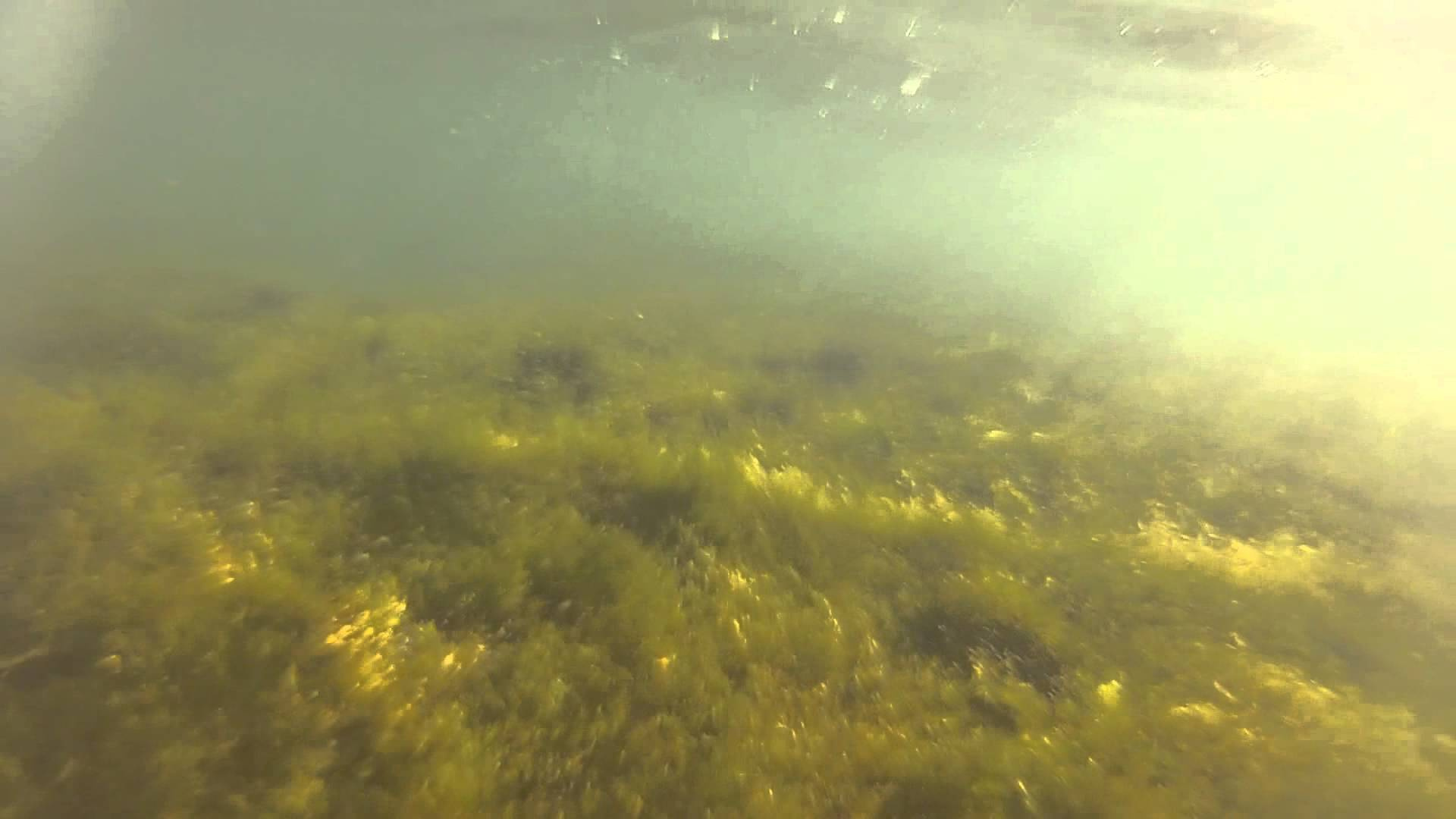
Episode 42: Lake Erie Seaweed Cleanup (season 2, disc 1)
Mike sees a guy with a huge rake dragging green slimy stuff out of a harbor. He decides to give it a try too, and learns what caused the algae growth in the first place.
You will be sequencing the events that led to the need for constant harbor cleaning.
| |
| |
Without having to get it out of a lake, you will be making drawings of algae viewed through a microscope.
| |
Algae can grow in a variety of environments. You will analyze the diagram in the assignment below to see which kinds of algae appear in different conditions.
| |
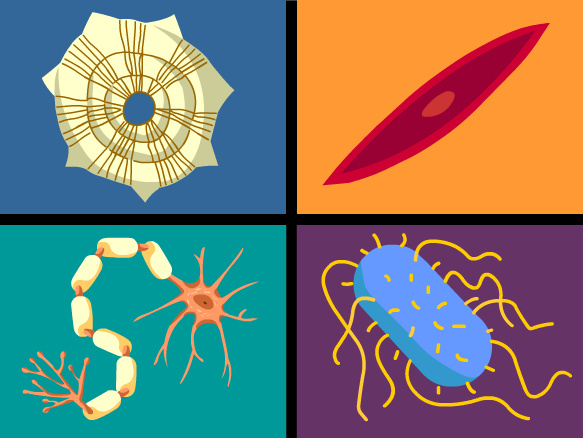
Brainpop: Cells
Legos. Cell parts. Cell types. And some magical zapping by Moby.
| |
Microscope drawing time. You'll be investigating the detailed structures found in human cheek cells.
| |
A bit from the textbook on the parts that pretty much all cells have, and the functions of those parts.
| |
| |
Another food and cell analogy for you. You can see that cake mix comes in plastic bags. Without the bags, all of the powder would be everywhere. The bags also keep the powdered mix fresh and keep the mix from getting wet. These plastic bags act just like a cell membrane, containing and protecting everything inside them. Just like the cytoplasm is found in all cells, a cell membrane is around the cytoplasm in all cells.
| |

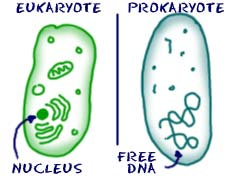
Take a look at the drawings of the two main types of cells. Eukaryotes (ones that are complicated inside) have a nucleus to hold DNA and lots of organelles. Prokaryotes (ones that are simple inside) just have DNA floating around, and very few organelles. You can click on the drawings to learn more details.
| |
Your textbook also compares these types of cells in a bit more detail. A couple of review challenges are included as well.
| |
Ever seen an amoeba? They're a pretty interesting unicellular organism. They move by stretching their cytoplasm out (safely contained within its cell membrane, of course) in different directions. If they come across something tasty to consume, they are able to extend pseudopods around that food item, and completely surround it. Take a look at the video clips below to see amoebas in action.
| |
| |
Microscope time: an amoeba (of course!) and onion-skin cells.
The first big difference between plant and animal cells is that a plant cell has something extra outside each cell membrane. There is a structure called a cell wall that surrounds each cell, providing strength and support to the plant, as plants do not have skeletons like animals do. So, the strong stone walls of this fort act the same way as a cell wall does for a plant cell.
You can also use this castle analogy for a cell membrane. The drawbridge allows only certain things to get into the castle, just like the cell membrane controls what gets in to (and out of) the cell itself.
| |
Another structure specific to plant cells is an organelle called a chloroplast. This organelle has the same function as a solar panel--they both collect sunlight and convert it into something else. A solar panel turns sunlight into electrical energy. This is especially handy in places like Antarctica where you just can't tap into a power plant. In a plant cell, the chloroplast turns sunlight into fuel called glucose (sugar). The glucose is food for the plant cells. Besides not having a skeleton, plants do not have mouths or digestive systems either, so being able to produce fuel in each cell is pretty handy.
| |
| |
| |
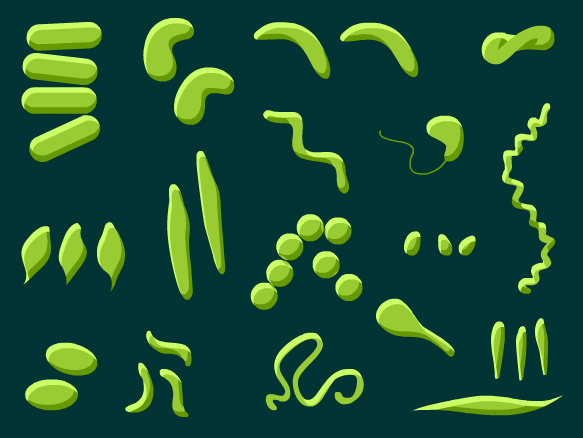
Brainpop: Bacteria
Tim gets really excited about the number of bacteria everywhere, compared to people. And about what they do, how they move around, and how long they have been on Earth. Bacteria get (and say) gnarly. There are also a lot of mini-Mobys.
Each baker working on cream puffs has a different job to get them ready for sale. The first baker puts them individually in the container with powdered sugar, the next baker uses tongs to make sure the cream puff is fully coated with the powdered sugar, and the final baker wraps them in paper and puts them in boxes. If each of the bakers tried to do all of the jobs, getting cream puffs ready would become complicated and inefficient.
Different cells in multicellular organisms (like you) have different functions. The cells in your eye need to do very different things than cells in your big toe. This idea is called cell specialization.
| |
| |
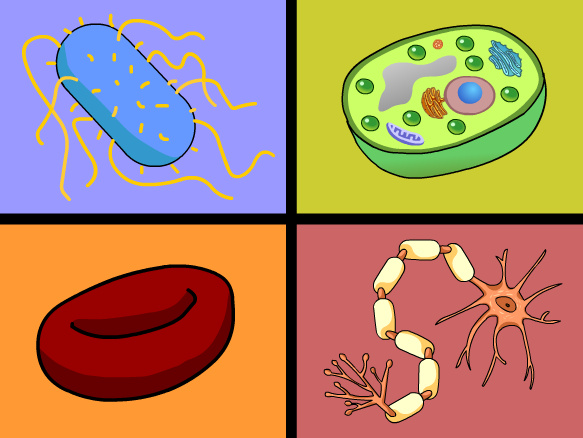
Brainpop: Cell Specialization
Tim compares the cells in plants and animals, describing how they work together. Moby gets mushy.
| |
Surgeons are a good example of a specialized profession. If you need surgery on your ear (like the patient in the picture) you would go to an ear specialist. Having someone operate on your ear that is a knee surgeon would not be as comforting. The ear surgeon would have years of training and experience in repairing exactly what has been damaged in your ear.
Similarly, the cells in your ear are specialized to help you hear and to maintain your balance. The cells in your knee have totally different jobs.
| |
Another good example of specialization is the different robots on a car assembly line. Each robot is designed to carry out a specific task on the car being assembled in front of them. As soon as their particular job has been completed, the conveyor moves the car along to the next station. Click on the link below to see this in action.
| |
These two microscope assignments will have you compare the specialized forms and functions of two different types of specialized cells in your body.
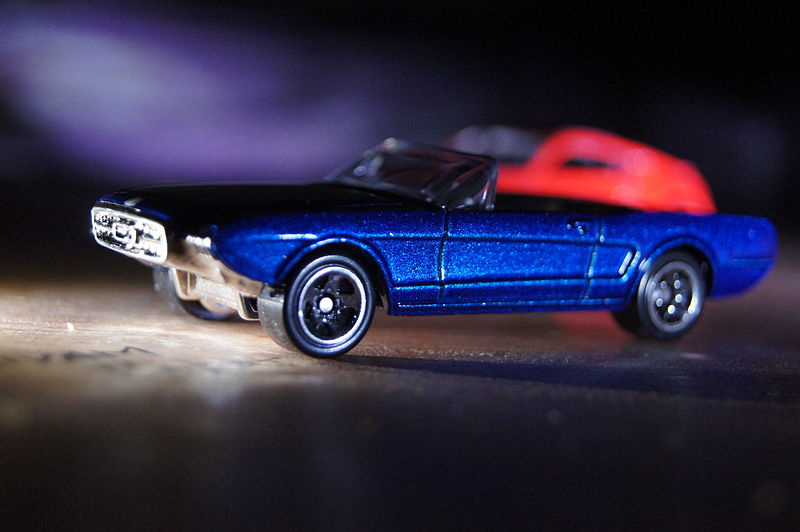
The smaller something is, the fewer specialized parts it will have. A toy car, like something made of very few cells, will have very few different parts. Being small and simple, it does not need to be that complicated.
| |
| |
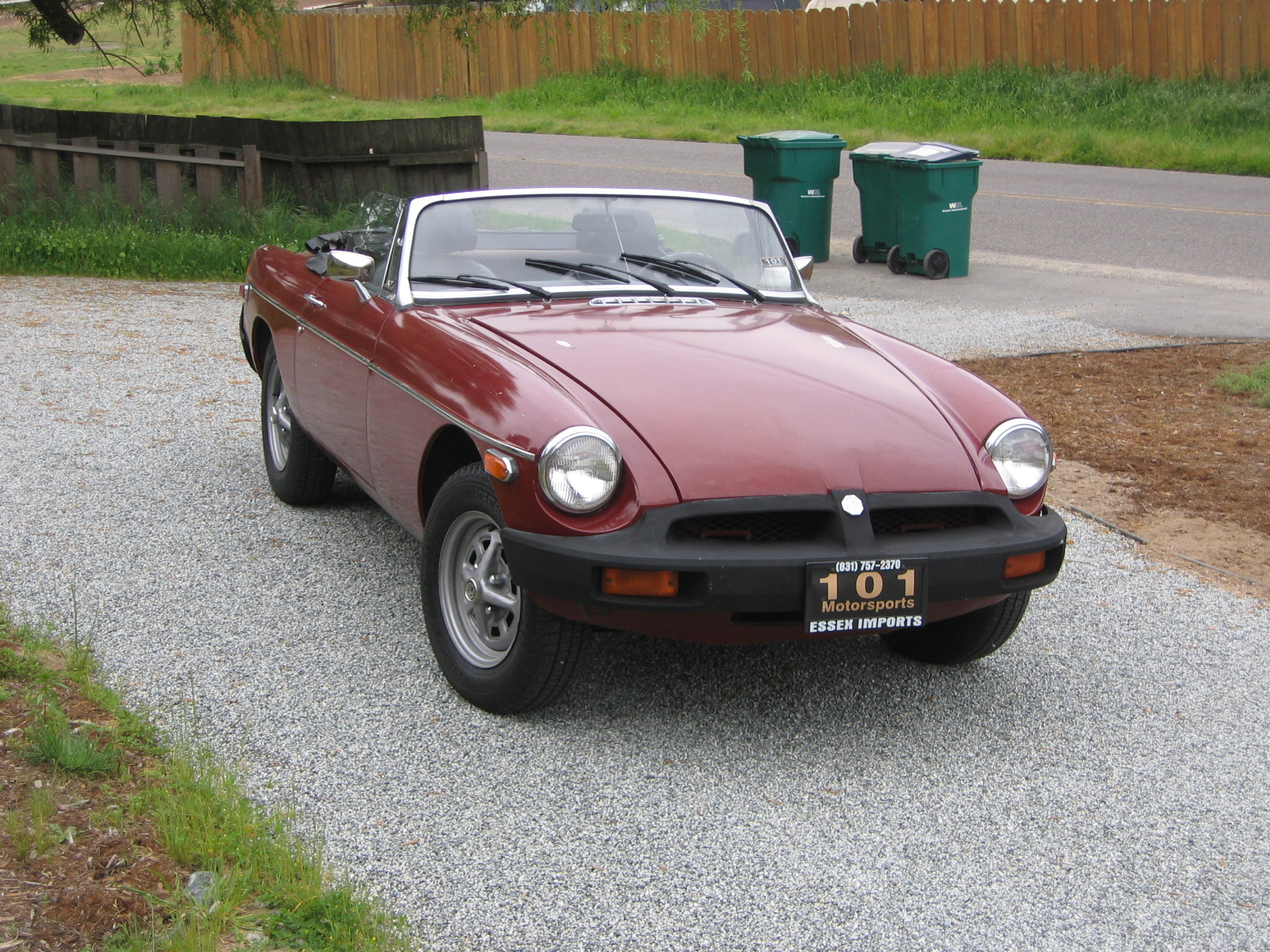
Looking at the car from the outside, you can still distinguish lots of specialized parts.
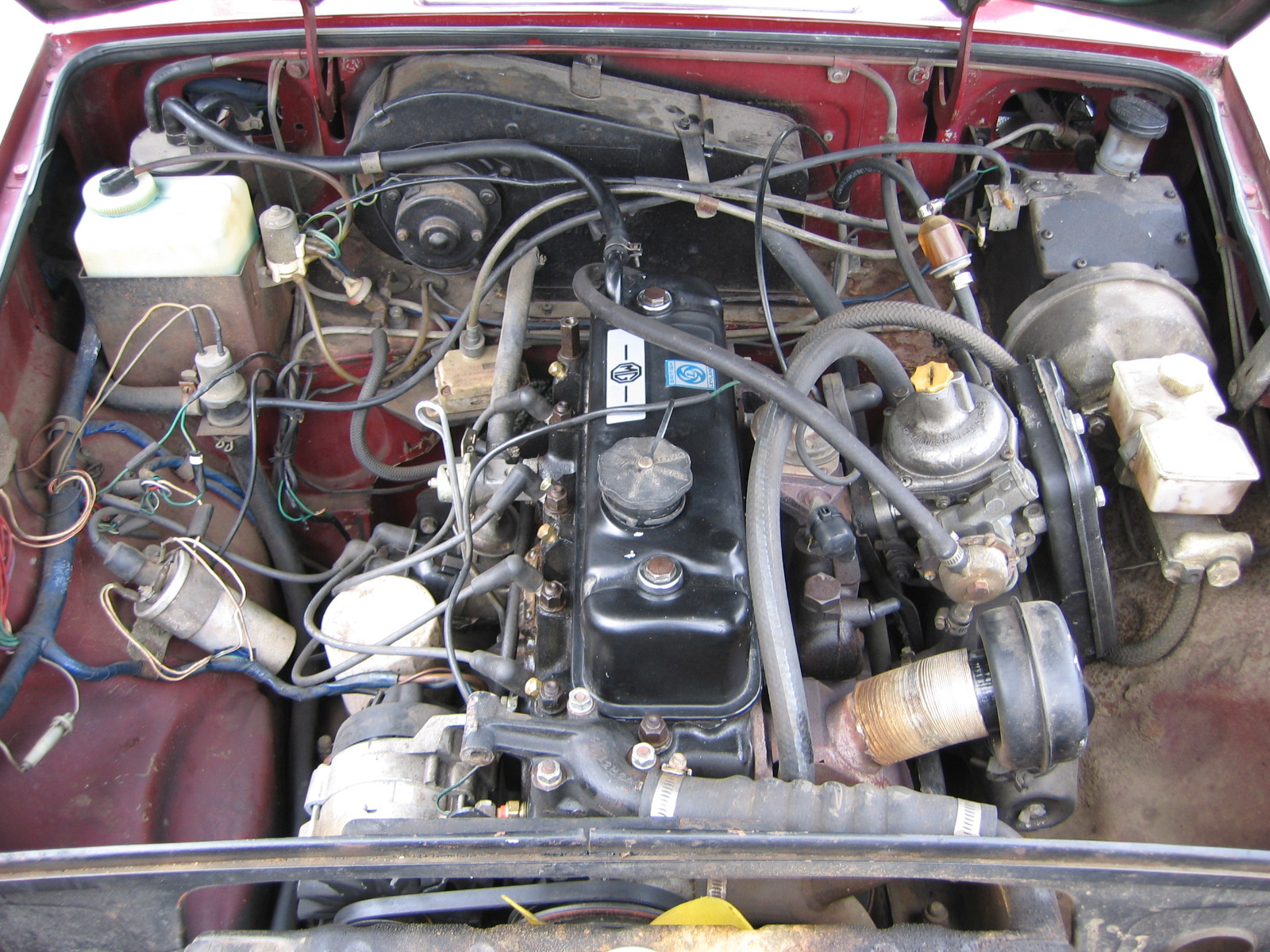
A full-size car, like a multicellular organism, is a lot more complicated. Just a peek under the hood alone reveals lots and lots of specialized parts.
| |
This assignment from the textbook compares unicellular and multicellular characteristics.
| |

